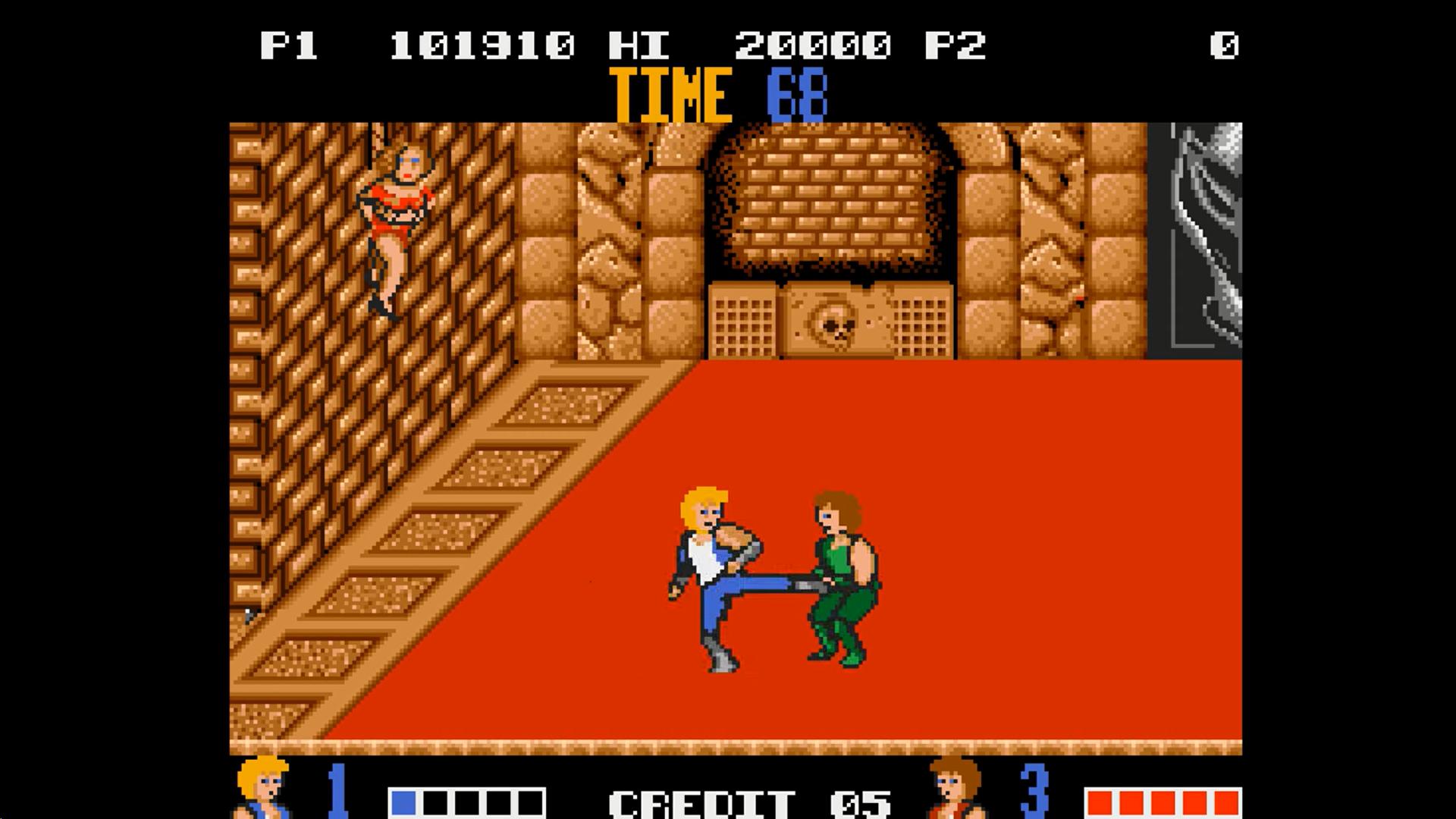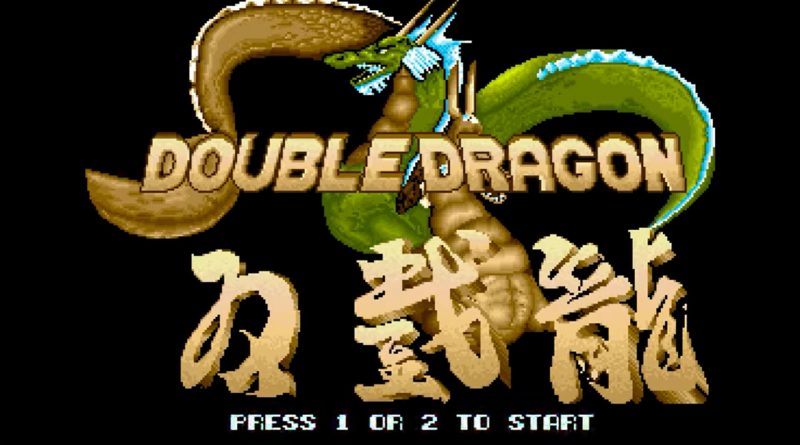All That Blitters: Double Dragon
A lot of things about Double Dragon appealed to me as a teenager. For starters, the protagonists of the game, Billy and Jimmy Lee (originally known as Hammer and Spike), were twins. I remember reading a lot of weird facts about twins as a kid, like twins who developed their own secret language, and some who claimed to have ESP, so the concept of butt-kicking karate twins seemed pretty awesome to me. I also liked that players could pick up weapons discarded by defeated enemies and actually use them for a change. For years I had lamented the fact that players couldn’t pry the weapons from the cold, digital hands of our fallen video game combatants. Now, in Double Dragon, Billy and Jimmy Lee were free to pick up whips, baseball bats, knives and sticks of dynamite that had been used against them and turn the tables on their attackers. Finally, I loved the elbow; an overpowered attack that, when performed properly, made players nearly undefeatable. It was a move that more than leveled the playing field; it gave the advantage to me, a questionably-skilled teenager hoping to get the most out of each quarter I spent at the bowling alley’s arcade
The arcade version of Double Dragon was developed by Technos and distributed across America and Europe by Taito in 1987. Although it wasn’t the first side scrolling beat-em-up game, Double Dragon defined the genre and influenced hundreds of punchy games that followed. The game was popular enough to warrant multiple arcade sequels including Double Dragon 2: The Revenge, Double Dragon 3: The Rosetta Stone, and a one on one fighter (confusingly also named Double Dragon) for the Neo Geo. Double Dragon also spawned a movie, a cartoon series, and dozens of home ports, including one for the Commodore Amiga.
The Amiga version of Double Dragon opens with a title screen that looks almost identical to the arcade. Save for the name of the game being swapped from silver to gold, it would be difficult to tell the difference between the two. Moments later, the illusion is shattered with a low quality sampling of the arcade’s attract-mode music. Understanding why this happened requires a brief Amiga history lesson.
Computer and console games are frequently developed for one system and then converted to others, recycling as much code as possible in an attempt to save costs and speed up production. Throughout the 80s and 90s, many developers took shortcuts by coding games for the Atari ST, and then porting those versions to the Commodore’s Amiga. The end result were games for the Amiga that did not fully utilize the system’s superior sound or graphic capabilities. Such is the case with Double Dragon. The Amiga version of Double Dragon is practically identical to the Atari ST version in every way, including the poorly sampled opening music. While I have no doubt with a bit of time Double Dragon’s opening music could have been easily reproduced by the Amiga’s sound system, time is money, and few developers were willing to spend any unnecessary time or money on a game’s title music.
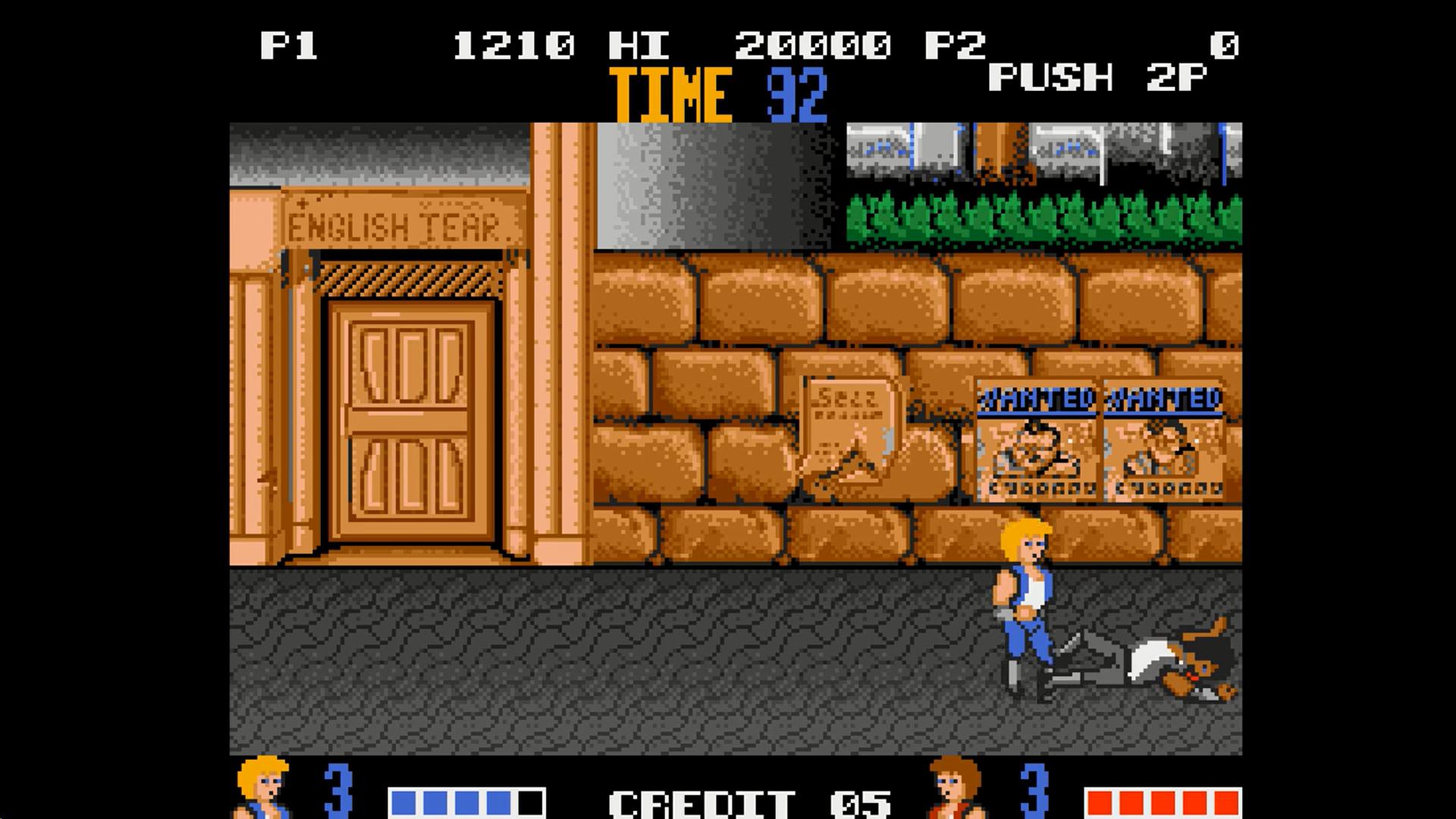
The best way to describe the Amiga port of Double Dragon is that it’s identical to the arcade version “except” for some things, and unfortunately those exceptions add up quickly.
The first thing you’ll notice missing is the arcade’s opening cinematic. The original opens with a brief cut scene where three members of the Black Warriors gang (along with the gang’s leader, Willy Mackey) punch Billy Lee’s girlfriend Marian right in the gut before kidnapping her. Although the scene is only ten seconds long, it provides a lot of insight into the game’s story. In one short scene we meet the gang Billy and Jimmy Lee will be facing, we instantly dislike them (who punches a woman in the gut?), and we immediately understand the twins’ motivation. Sure, the game can be played without the intro, but that scene immediately allows players to bond with the protagonists.We want to defeat the Black Warriors gang, too! Without it, Double Dragon is just a game where random guys kick and punch other random guys. In terms of narrative it’s a textbook example of showing versus telling, and its omission is a big loss to the story.
Another obvious difference from the arcade version of Double Dragon are the game’s controls. Arcade players had the luxury of three buttons to punch, kick, and jump. Unfortunately, Commodore’s maddening loyalty to single-button joysticks limits the number of attacks available, complicating matters for Billy and Jimmy Lee. For example, aerial flying kicks (one of the best ways in the arcade for closing the distance between you and an opponent and dishing up some filet of sole in the process) are performed by a downward diagonal movement, a direction which is completely counterintuitive.
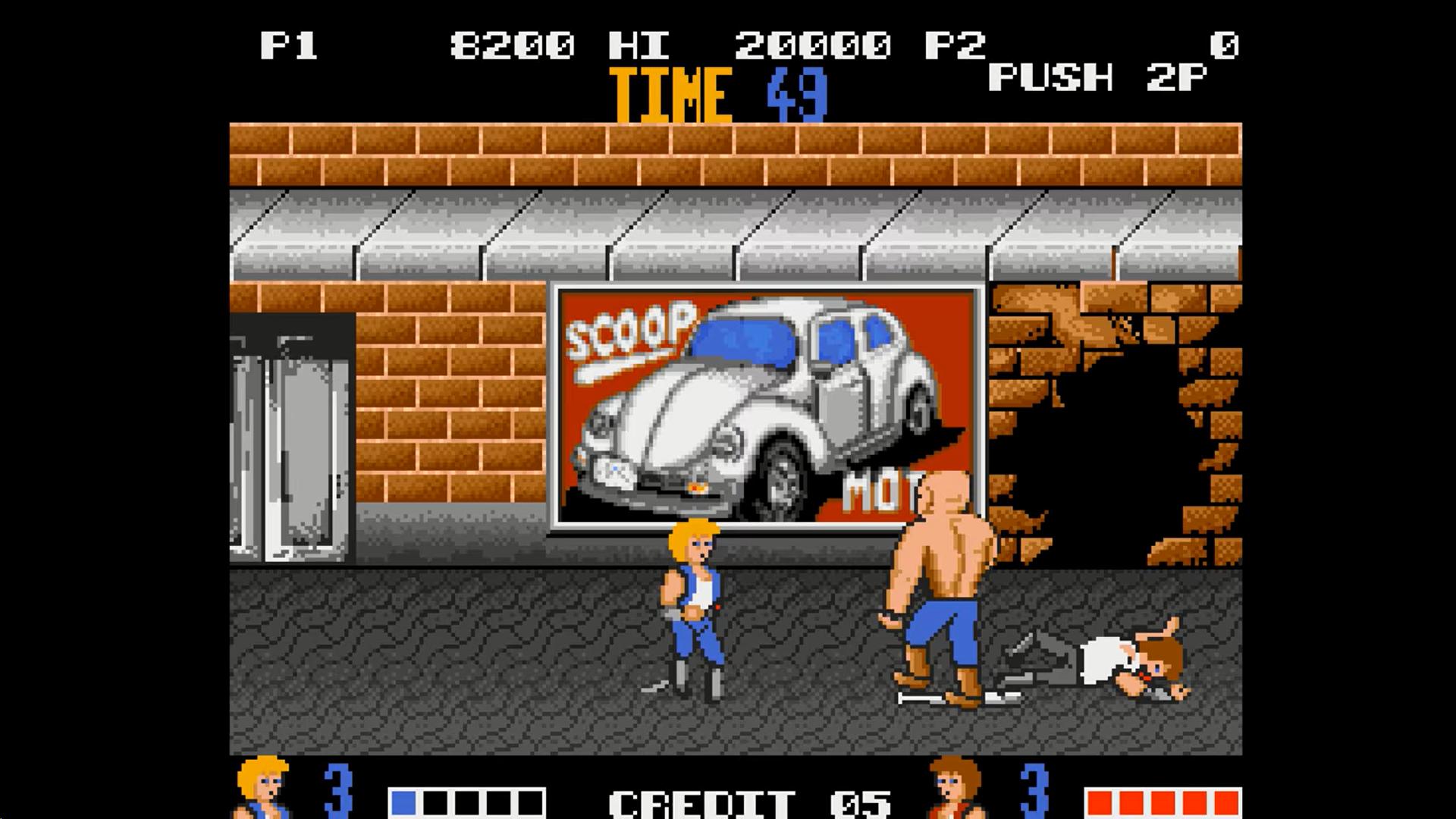
Players familiar with the arcade version will immediately notice a difference in the Amiga’s graphics, which while not terrible are obviously inferior to the arcade. According to MAME the arcade version of Double Dragon has a resolution of 256×240, so the Amiga’s traditional 320×200 resolution with 32 colors should have been able to come close (if not exceed) the arcade’s graphics. While the game’s backgrounds are mostly loyal to the arcade’s, the decrease in quality is immediately obvious when looking at the player characters. All of the shading and most of the details have been removed from Billy and Jimmy.
At some point you have to separate the Amiga version from the arcade and judge it on its own merits. Just like the arcade, Double Dragon allows one or two players to move through five levels in an attempt to rescue Marian and beat up dozens of members of the Black Warriors gang along the way. While I never noticed it in the arcade before, the Amiga version feels… repetitive. The lack of background music playing throughout the levels puts your ears’ focus on the game’s sound effects, which aren’t that good. Each punch and kick that lands sounds like a door being slammed shut, and each time an enemy dies it sounds like they’re vomiting. Most of the enemies are simple color swaps of the main characters, and without any personality or difference in attack strategies, the longer you play Double Dragon the more it begins to drag on..
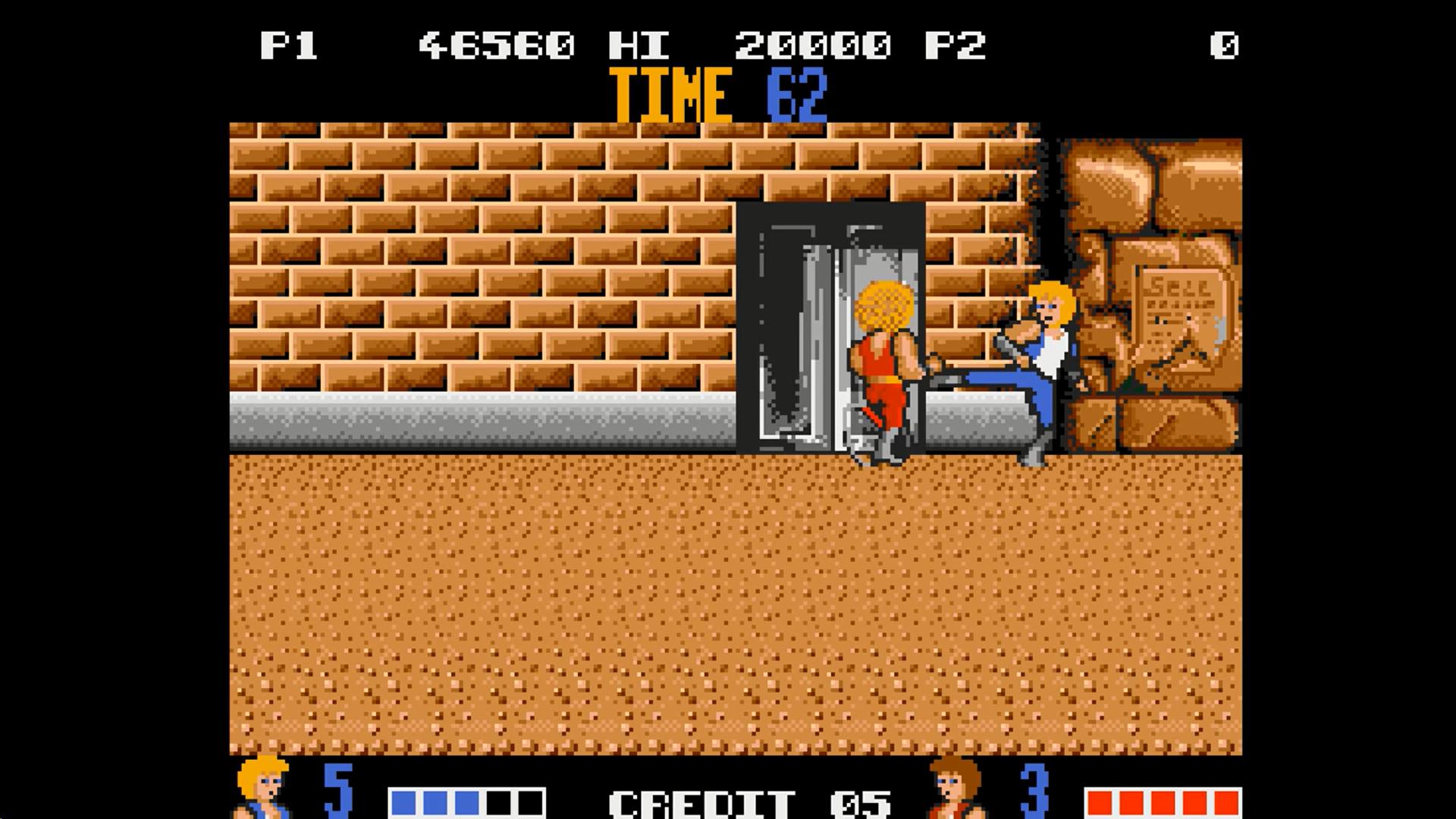
The goal of Double Dragon is to get as many points as possible on your way to rescue Marian. The game only has five levels, and beating the game is relatively easy save for a few “insta-death” moments built into later levels of the game. The Amiga version of Double Dragon awards players five coins, so at three lives per coin, that’s a total of fifteen lives. (Many cracked copies contain an “infinite lives” cheat, which makes beating the game even easier.) Even with a few treacherous traps in the last levels, your will to finish the game will likely run out before your credits will.
Double Dragon was plagued with a series of poor home conversions. Sadly, the Amiga (and nearly identical Atari ST) are considered to be two of the best, leagues above all the 8-bit conversions andyet nowhere near as good as the nearly arcade-accurate version for the Sega Genesis. Double Dragon isn’t a terrible game for the Amiga, but it lost a bit of fun in the process of being converted.
